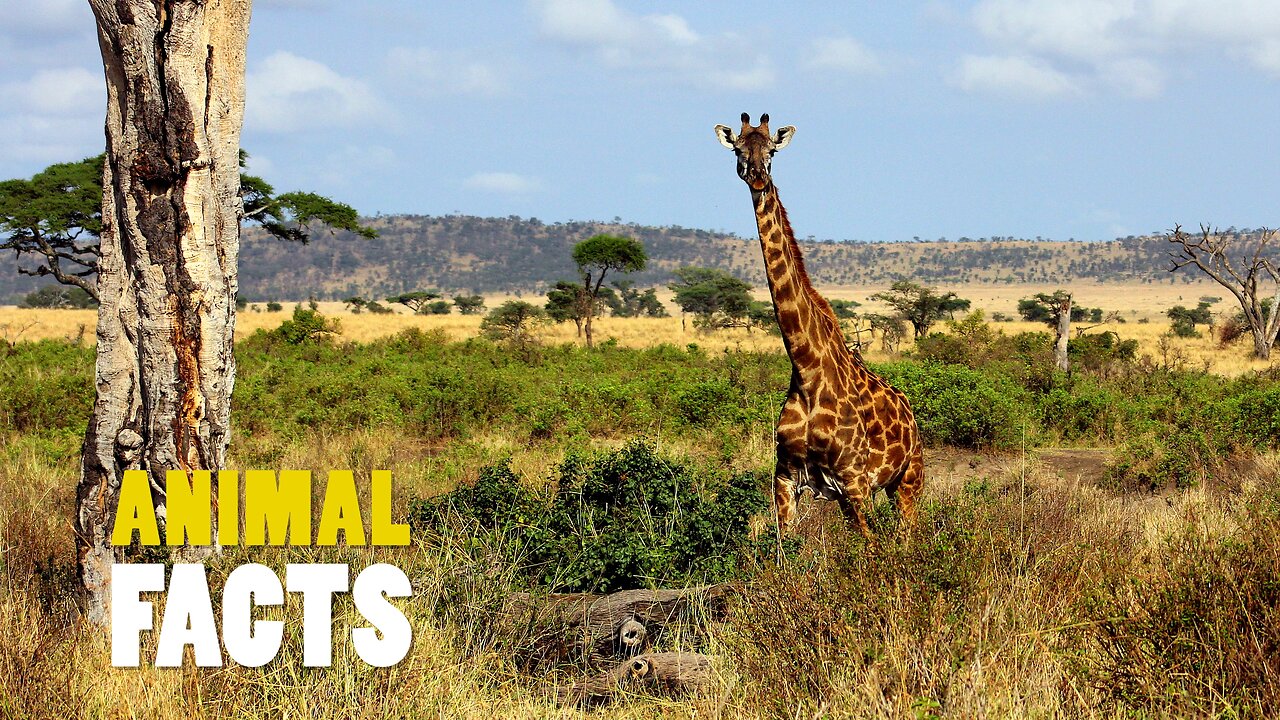Premium Only Content

Giraffes' Patterns Explained | Why Are Their Spots So Unique?
For video production services contact [email protected] https://www.inspiredrisk.com/
Did you know that no two giraffes have the same pattern of spots? Each giraffe’s coat is unique, much like human fingerprints! These distinctive patterns help giraffes camouflage in their natural habitat, blending in with the trees and bushes. Interestingly, the spots are also used to regulate body temperature. The larger and lighter spots on their bodies allow heat to dissipate, helping giraffes stay cool in the hot African climate. So, the next time you spot a giraffe, remember—it’s not just their height that makes them special, but their beautiful, one-of-a-kind patterns.
If you’re willing and able, here are just some actions you can take for Conservation, Climate Change and Animal Welfare;
. Adopt a Plant-Based Diet: Reducing or eliminating animal products lowers demand for factory farming, which is a major driver of deforestation, habitat destruction, animal cruelty and greenhouse gas emissions.
. Support Sustainable Brands and Companies: Choose products and services from companies that prioritize sustainability, ethical sourcing, reducing emissions, minimizing waste and animal welfare in their practices, such as those with certified Fair Trade, organic, or cruelty-free labels.
. Advocate for Wildlife Protection Laws: Support and raise awareness about policies that protect endangered species, regulate hunting, and safeguard critical habitats from destruction through legal means.
. Reduce Energy Consumption: Cut down on electricity and fuel use by investing in energy-efficient appliances, utilizing renewable energy sources, and adopting green practices like switching off lights when not in use and reducing car travel.
. Plant Trees and Support Reforestation Efforts: Trees are vital in the fight against climate change by absorbing carbon dioxide, protecting biodiversity, and supporting wildlife habitats. Participate in local tree-planting initiatives or donate to organizations focused on reforestation.
. Conserve Water: Freshwater is a limited resource, and conserving water helps maintain critical ecosystems and supports agricultural and wildlife needs. Use water-efficient fixtures, avoid wasting water, and support organizations that protect freshwater ecosystems and wetlands, which are vital for both wildlife and human communities.
. Educate and Raise Awareness: Spread knowledge about conservation, animal welfare, and environmental issues. Sharing information on social media or in your community can inspire others to take action.
. Reduce, Reuse, Recycle: Minimize waste by opting for reusable products, recycling materials, and choosing items with minimal packaging to reduce landfill waste and conserve natural resources.
. Volunteer for Conservation Projects: Donate time to wildlife rescue centers, local environmental groups, or global conservation organizations. Direct involvement in conservation efforts can have a meaningful impact on local ecosystems.
. Choose Eco-Friendly Travel: When possible, opt for sustainable travel options like walking, biking, or using public transport. When traveling long distances, support eco-conscious tourism operators that prioritize conservation and minimize their carbon footprint.
. Advocate for Climate Policy: Contact local representatives, vote for pro-environmental policies, and join climate advocacy groups pushing for legislative change.
. Compost: Start composting organic waste to reduce landfill contributions and improve soil health.
. Support Sustainable Tourism: Travel responsibly by choosing eco-friendly tours and hotels that prioritize sustainability and wildlife protection.
. Support Wildlife Corridors: Advocate for and support the creation of wildlife corridors that help animals move safely through their habitats.
. Participate in Clean-Up Initiatives: Join local efforts to clean up beaches, rivers, or parks to remove trash that can harm wildlife.
. Practice Sustainable Gardening: If you're growing a garden, use eco-friendly techniques that reduce pesticide use and support biodiversity.
. Adopt, Don’t Shop: Consider adopting rescue animals instead of buying from breeders or pet stores, helping reduce the demand for animal breeding and the number of animals in shelters.
-
 11:04
11:04
TheSaltyCracker
16 hours agoEpstein Email Alleges Hillary Had Sexual Affair with ‘Suicided’ Vince Foster
47.1K169 -
 54:26
54:26
ZeeeMedia
12 hours agoWhy America Needs Radical Change & The New Governor of NY? ft. Larry Sharpe | Daily Pulse Ep 143
14.1K4 -
 16:17
16:17
stateofdaniel
1 day agoDems Caught EDITING Epstein Emails to FRAME Trump
13.9K24 -
 13:52
13:52
Comedy Dynamics
1 day agoSam Tallent Roasting the Audience
44.5K3 -
 16:28
16:28
Nikko Ortiz
17 hours agoPainful Fails That HURT To Watch...
38.7K9 -
 9:40
9:40
MattMorseTV
16 hours ago $19.38 earnedAbsolutely NO ONE saw this coming…
21.8K78 -
 2:04:53
2:04:53
Side Scrollers Podcast
20 hours agoHasan Piker Goes FULL Propaganda + Kirsche & Craig Make “The List” + More | Side Scrollers
51.8K8 -
 17:59
17:59
GritsGG
16 hours ago15 Win Streak on Warzone! Journey to 4000 Wins!
13.9K -
 7:40
7:40
Blabbering Collector
2 days agoLEAKED: Draco Malfoy, Hooch, Neville Longbottom! | Harry Potter HBO Show Update, Wizarding News
48.7K5 -
 LIVE
LIVE
Lofi Girl
3 years agolofi hip hop radio 📚 - beats to relax/study to
306 watching